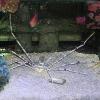-
Topics
-
Latest Update
-
0
WIZARD WEB RECOVERY A LEADING EXPERT IN LOST CRYPTO RECOVERY
I never thought I'd see a penny of my stolen bitcoin again. I had invested over $150,000 in bitcoin back when it was still relatively new and unknown. As the price skyrocketed over the years, my investment grew to be worth over $400,000. One day I went to check my wallet and to my horror, the entire balance had been transferred out. My heart sank realizing all those years of watching my investment grow had been wiped away in an instant by some hacker. I frantically searched online for any way to recover stolen cryptocurrency. Most advice said there was nothing I could do if the thief took proper precautions with the private keys. Then I came across Wizard web recovery - a new web service that claims to use advanced statistical analysis to track stolen bitcoin as it gets passed around different wallets. I was skeptical but filled out their online form, explaining when and how my bitcoin was stolen. A few days later I received an email from a Wizard web recovery analyst. They had traced my stolen bitcoin to a popular exchange where the thief had cashed out. By contacting the exchange, they were able to recover my bitcoin! I was stunned. I truly never thought I'd see that money again. Thanks to Wizard web recovery brilliant web tracking, I got back every last satoshi of my $150,000 in stolen bitcoin. It was an incredible feeling to have what I thought was lost forever returned in the blink of an eye by these blockchain recovery specialists via: wizard web recovery (@) programmer(.) net -
1
HOW TO RECOVER LOST OR STOLEN CRYPTOCURRENCY / GRAYHATHACKS CONTRACTOR
I never thought I'd see a penny of my stolen bitcoin again. I had invested over $150,000 in bitcoin back when it was still relatively new and unknown. As the price skyrocketed over the years, my investment grew to be worth over $400,000. One day I went to check my wallet and to my horror, the entire balance had been transferred out. My heart sank realizing all those years of watching my investment grow had been wiped away in an instant by some hacker. I frantically searched online for any way to recover stolen cryptocurrency. Most advice said there was nothing I could do if the thief took proper precautions with the private keys. Then I came across Wizard web recovery - a new web service that claims to use advanced statistical analysis to track stolen bitcoin as it gets passed around different wallets. I was skeptical but filled out their online form, explaining when and how my bitcoin was stolen. A few days later I received an email from a Wizard web recovery analyst. They had traced my stolen bitcoin to a popular exchange where the thief had cashed out. By contacting the exchange, they were able to recover my bitcoin! I was stunned. I truly never thought I'd see that money again. Thanks to Wizard web recovery brilliant web tracking, I got back every last satoshi of my $150,000 in stolen bitcoin. It was an incredible feeling to have what I thought was lost forever returned in the blink of an eye by these blockchain recovery specialists via: wizardwebrecovery(@)programmer(.) net -
1
HOW TO RECOVER LOST OR STOLEN CRYPTOCURRENCY / GRAYHATHACKS CONTRACTOR
I am pleased to recommend the expert services of Grayhathacks, a team of highly skilled hackers who specialize in recovering lost cryptocurrency and assisting victims of investment scams. From the outset, they demonstrated a deep understanding of my unique situation and provided tailored solutions to help me navigate the complex world of cryptocurrency forensics and legalities. Their team of experienced professionals worked tirelessly around the clock, employing state-of-the-art hacking tools and techniques to trace my stolen funds and identify the individuals responsible for the scam. Thanks to Grayhathacks' relentless efforts, they were able to recover a substantial portion of my lost cryptocurrency and assisted me in filing a successful complaint with the relevant authorities. Throughout the entire process, they maintained constant communication, keeping me informed of every development and explaining each step of the recovery process in detail. Their commitment to client satisfaction was truly impressive, and I felt completely supported and reassured by their expertise and professionalism. I would have no hesitation in recommending Grayhathacks to anyone who finds themselves in a similar predicament. Their combination of technical expertise, diligence, and compassionate client care sets them apart from other recovery services in the industry. If you or someone you know has fallen victim to an investment scam, do not hesitate to contact Grayhathacks - they truly are the best in the business. Email: grayhathacks@contractor.net -
1
CRYPTO FRAUD AND ASSET RECOVERY_HACKATHON TECH SOLUTION
HOW TO RECOVER LOST OR STOLEN CRYPTOCURRENCY / GRAYHATHACKS CONTRACTOR I am pleased to recommend the expert services of Grayhathacks, a team of highly skilled hackers who specialize in recovering lost cryptocurrency and assisting victims of investment scams. From the outset, they demonstrated a deep understanding of my unique situation and provided tailored solutions to help me navigate the complex world of cryptocurrency forensics and legalities. Their team of experienced professionals worked tirelessly around the clock, employing state-of-the-art hacking tools and techniques to trace my stolen funds and identify the individuals responsible for the scam. Thanks to Grayhathacks' relentless efforts, they were able to recover a substantial portion of my lost cryptocurrency and assisted me in filing a successful complaint with the relevant authorities. Throughout the entire process, they maintained constant communication, keeping me informed of every development and explaining each step of the recovery process in detail. Their commitment to client satisfaction was truly impressive, and I felt completely supported and reassured by their expertise and professionalism. I would have no hesitation in recommending Grayhathacks to anyone who finds themselves in a similar predicament. Their combination of technical expertise, diligence, and compassionate client care sets them apart from other recovery services in the industry. If you or someone you know has fallen victim to an investment scam, do not hesitate to contact Grayhathacks - they truly are the best in the business. Email: grayhathacks@contractor.net- bitcoin recovery
- hire a hacker
-
(and 1 more)
Tagged with:
-
0
Wts gd size 3inch black tang
With me for about 2 years. Very good size specimen and feeding well on mysis pellet and algae. For sale at $1,800. Collection at kembangan. Pm or telegram me @caulifloweric to deal
-










Recommended Posts
Join the conversation
You can post now and register later. If you have an account, sign in now to post with your account.